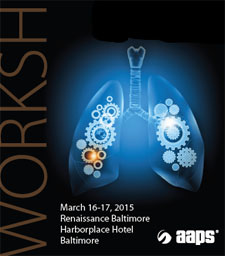 Since 2000, developers of immediate-release oral drugs have been able to request waivers of in vivo bioequivalence studies based on the FDA’s Biopharmaceutics Classification System (BCS). Now a workshop sponsored by the AAPS Inhalation and Nasal Technology Focus Group, the USP, and the FDA will explore whether the same type of classification system can be developed for inhalation drug products.
Since 2000, developers of immediate-release oral drugs have been able to request waivers of in vivo bioequivalence studies based on the FDA’s Biopharmaceutics Classification System (BCS). Now a workshop sponsored by the AAPS Inhalation and Nasal Technology Focus Group, the USP, and the FDA will explore whether the same type of classification system can be developed for inhalation drug products.
The workshop, titled “Inhalation Biopharmaceutical Product Classification System Development: Challenges and Opportunities” will take place in Baltimore, MD, March 16-17, 2015. Over the course of the two-day meeting, leading OINDP specialists will consider the biorelevance of in vitro parameters, particularly dissolution, permeability, and deposition.
Program committee member Jayne Hastedt of JDP Consulting explains that after reviewing the ongoing discussions about bioequivalence and dissolution testing that have been taking place among inhaled drug developers, “The AAPS INTFG wondered whether an inhalation BCS (iBCS) system could be developed for pulmonary drug products. Basically, we wanted to know if a classification system for inhaled drugs could lead to a better understanding of the key in vitro attributes impacting product bioperformance.”
The existing BCS classifies oral drugs based on solubility and permeability, assuming that highly soluble drugs with high permeability and with a wide therapeutic range can be shown to be bioequivalent to other formulations based on the similarity of their dissolution profiles.
For the majority of inhaled drugs designed for local rather than systemic action, however, the importance of dissolution rate and absorption are in question, and furthermore, the complexity of the lung makes it extremely difficult to perform in vitro testing of those parameters that would be relevant to the drug’s behavior in vivo.
One of the highlights of the program, Hastedt notes, will be the presence of University of Michigan professor Gordon Amidon, the originator of the BCS. “We are thrilled to have Professor Gordon Amidon, the ‘father of BCS’ speak at the workshop,” she says; “he will give the keynote presentation and set the stage by discussing the history of the BCS for oral drug products. His background and understanding will help guide us throughout the workshop.” Amidon’s presentation will introduce the classification system, discuss its relevance to IVIC and biowaivers, and review its limitations.
In addition to Amidon, the program includes a number of speakers from industry and academia who will discuss various factors involved in potential IVIVC for orally inhaled drugs, including lung physiology, PK/PD modeling for pulmonary delivery, and dissolution testing for inhaled products.
On the second day, following the presentations, the workshop will switch to a more interactive format, beginning with a round table discussion of considerations for a small molecule classification system and followed by a trio of breakout sessions to discuss dose number, absorption number, and dissolution number in relation to a possible inhalation BCS.
Through the round table and breakout sessions, Hastedt suggests, attendees have the opportunity to significantly influence the future of inhaled drug delivery: “This is an exciting time for the pulmonary drug delivery field, and attendees of this workshop will able to shape a new scientific framework that will hopefully advance our understanding of inhalation product performance.”
After the conclusion of the meeting, the organizers plan to continue the discussion of a potential iBCS through publication of a series of white papers based on “key learnings” from the workshop.
Anyone interested in attending the workshop can register via the AAPS meeting site.


